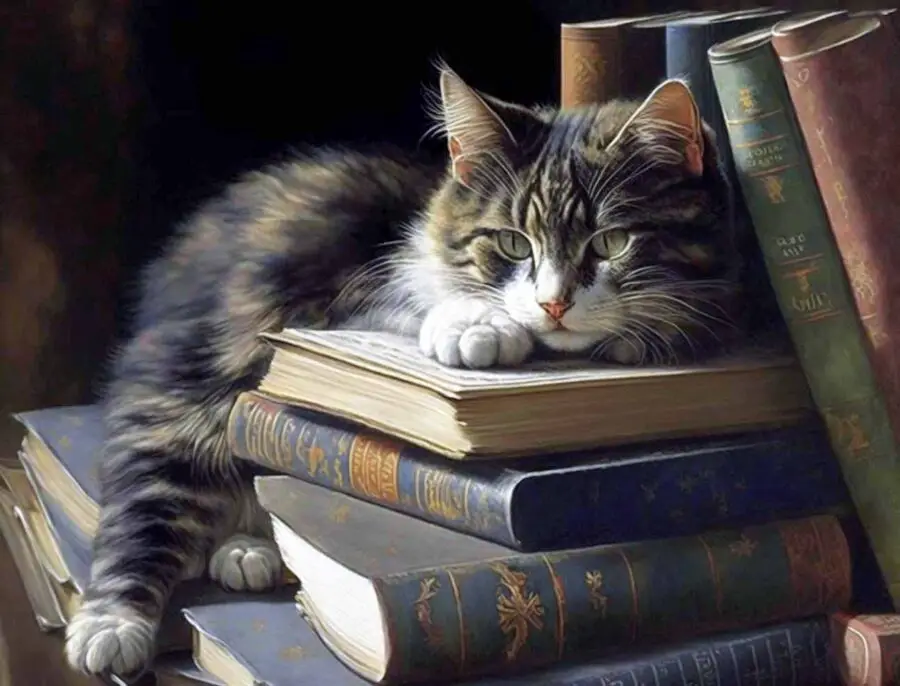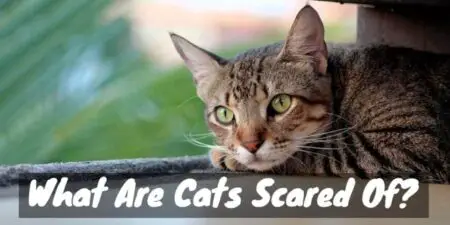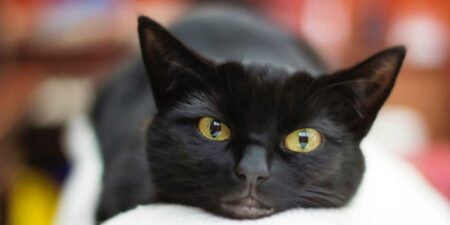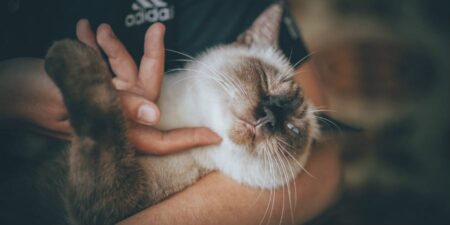In a society where books are banned, it’s clear that people’s ability to think, speak, and share ideas freely is being held back.
Banning books shows that there’s a fear of different ideas or points of view that might go against what’s considered normal or acceptable.
Ironically, the banning of books can sometimes have the opposite effect of what was intended, as it often draws more attention to the controversial work and generates increased interest in it.
In this quick read, we’ll briefly explore the symbolism of cats from 7 cultures in history, which will inform us of important historical cat contexts.
After that, we’ll share a list of 10 cat-related books that were banned and why.
Symbolic Meanings and Roles of Cats from 7 Cultures in History
Cats have held various symbolic meanings and roles in different cultures throughout history.
Some of the most notable examples include:
1. Ancient Egypt
Cats were highly revered in Ancient Egyptian culture, symbolizing protection, fertility, and grace.
The domestic cat was believed to have a divine essence and was often associated with the goddess Bastet, who was the goddess of the home, fertility, and protection against diseases and evil spirits.
Killing a cat, even accidentally, was considered a serious crime and could lead to severe punishment.
How to Be a Cat in Ancient Egypt (Video)
2. Ancient Rome
Cats were appreciated for their hunting skills and were often kept as pets to control rodents.
They were associated with the goddess Diana, who was the goddess of the hunt, moon, and nature.
Cats were seen as symbols of independence, freedom, and sensuality.
3. Norse Mythology
The goddess Freyja, associated with love, beauty, fertility, and war, had a chariot pulled by two large cats.
Cats in Norse culture were believed to represent sensuality, grace, and balance, as well as being good luck charms for fertility and marriage.
4. Islam
Cats are generally well-regarded in Islamic culture due to their cleanliness and the Prophet Muhammad’s fondness for them.
It’s believed that he had a favorite cat named Muezza.
Cats are considered to be ritually clean animals, and they are often allowed to roam freely in mosques.
5. Japanese Culture
The Maneki-Neko, or “beckoning cat,” is a popular symbol of good luck and prosperity in Japan.
This cat figurine is often found in homes and businesses, with one paw raised in a beckoning gesture to attract good fortune.
Additionally, the Bobtail cat, a traditional Japanese breed, is believed to bring good luck and happiness.
6. Chinese Culture
Cats are believed to have protective qualities and are thought to ward off evil spirits.
They symbolize luck, happiness, and prosperity.
The Chinese also associate cats with fertility and femininity, and a cat is sometimes given to a newlywed couple as a symbol of marital happiness and numerous offspring.
Relatable Cat Poems From 800 Years Ago (Video)
7. Celtic Mythology
Cats in Celtic folklore were associated with mystery, magic, and transformation.
They were believed to have supernatural abilities and were often linked to the spirit world.
Cats were also seen as guardians of the Underworld and were associated with the Celtic goddess Brigid.
These examples demonstrate the diversity of meanings and roles that cats have held in various cultures across the globe.
Their symbolism often reflects the characteristics that people have admired and valued in these enigmatic creatures, such as their grace, agility, and independence.
10 Books About Cats That Were Banned
Book #1: “The Cats of Ulthar” by H.P. Lovecraft
This short story, published in 1920, features cats in a central role.
While not banned outright, Lovecraft’s works have been criticized and sometimes removed from libraries due to his racist views and controversial content in some of his other writings.
This may have led to some instances where “The Cats of Ulthar” was removed from circulation.
The Cats of Ulthar (1920) (Video)
Book #2: “The Satanic Verses” by Salman Rushdie
Published in 1988, this novel contains a subplot involving a character who turns into a cat.
Although the book is not specifically about cats, it was banned in several countries and led to a fatwa being issued against Rushdie, calling for his execution.
The book was seen as blasphemous by some Muslims due to its controversial portrayal of the Prophet Muhammad.
Book #3: “The Cat in the Hat” by Dr. Seuss
While not banned outright, this popular children’s book has faced controversy and removal from some libraries and schools.
The reasoning typically stems from concerns over racial stereotyping in the character design, rather than the content specifically relating to cats.
“Offensive” Drawings that Got Dr. Seuss Books Banned
Book #4: “Alice’s Adventures in Wonderland” by Lewis Carroll
This book, published in 1865, features a character named the Cheshire Cat.
It was banned in some places, such as in the province of Hunan, China, in the 1930s, due to its alleged portrayal of animals with human traits and characteristics, which was seen as a breach of traditional values.
Book #5: “Maus” by Art Spiegelman
A graphic novel published in 1986, Maus uses anthropomorphic animals to depict the Holocaust, with Jews represented as mice and Germans as cats.
It was banned in some libraries and schools due to its explicit content and sensitive subject matter.
Book #6: “Old Possum’s Book of Practical Cats” by T.S. Eliot
Although this collection of whimsical cat-themed poems has not been widely banned, it has faced occasional censorship, usually for the inclusion of racial slurs in some of the poems.
Book #7: “I Am a Cat” by Natsume Soseki
This Japanese novel from 1905 is narrated by a cat who observes the lives of the humans around it.
While not banned outright, it has faced controversy and censorship in some instances, typically due to cultural or political factors.
Book #8: “Krazy Kat” by George Herriman
A comic strip that ran from 1913 to 1944, Krazy Kat focused on a love triangle between a cat, a mouse, and a dog.
It has been subject to censorship and controversy at times due to its challenging of social norms, such as gender roles and racial stereotypes.
Book #9: “The Master and Margarita” by Mikhail Bulgakov
This novel, published in 1967, features a large black cat named Behemoth as one of the main characters.
While the book is not primarily about cats, it was banned in the Soviet Union for its satirical portrayal of the communist regime and religious themes.
Behemoth the Cat from the Master and Margarita (Video)
Book #10: “Felidae” by Akif Pirinçci
This German detective novel, published in 1989, stars a cat named Francis who solves crimes.
It has faced controversy and calls for banning due to its graphic content and depictions of violence.
Summary
Banning books about cats is a misguided approach that limits our intellectual growth and hinders the exploration of these captivating creatures.
"In ancient times cats were worshipped as gods; they have not forgotten this."
-- Terry Pratchett





